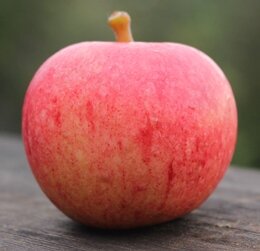Cox’s Orange Pippin
Why you should be excited
Cox’s Orange Pippin is viewed by folks from the U.K. as unquestionably the holy grail of fresh-eating apples.
The story of Cox's Orange Pippin
Let’s be honest here: people in England tend to view themselves as THE authorities on apples. Quality, serious apples, at least.
And the word from the British Isles is that you can and will never do better than a Cox’s Orange Pippin when you’re looking for a fresh-eating apple. Which explains why this apple has been used so extensively in the breeding of other varieties; it seems that just about every U.K. apple-breeder was looking to create a great new variety.
It might not immediately win over those who want nothing but hard, crisp and tart apples, but there’s no doubt Cox’s Orange Pippin has a whole lot of interesting flavours going on, all at the same time.
Don’t worry about the superior British attitude; try a Cox Pippin anyway. If it’s your first, open your mind, then your mouth. You’re in for a special treat.
Cox's Orange Pippin Facts
Its origins
Discovered at Colnbrook Lawn, England, 1825.
Flavour, aroma, texture
Unparalleled complexity of flavours. Spicy, honeyed, nutty, aromatic yet subtle. Ideal balance of sweet and tart.
Appearance
Medium-sized. Red stripes over a background that's greenish-yellow, verging on golden. Often russeted.
When they’re available
Mid-season (usually in early October).
Quality for fresh eating
Exceptional.
Quality for cooking
Mainly used for fresh eating.
Quality for cider
Doesn't have a particular history as a cider apple, but -- like other heritage varieties -- it can almost certainly contribute positively to cider blends.
Keeping ability
Good (around 2 months when kept refrigerated).



